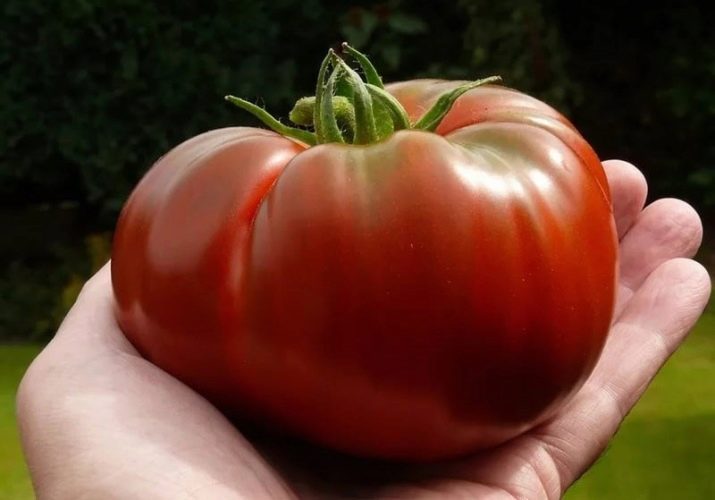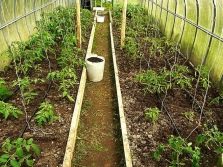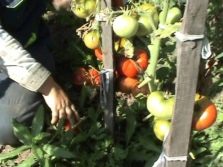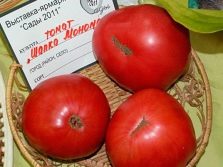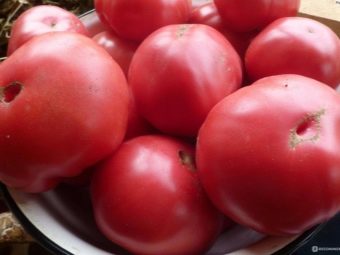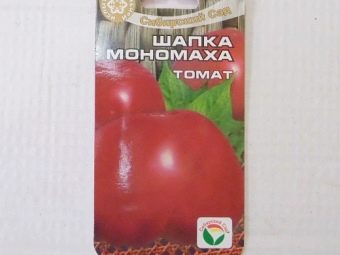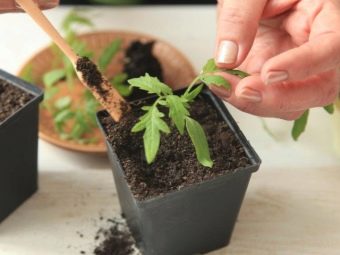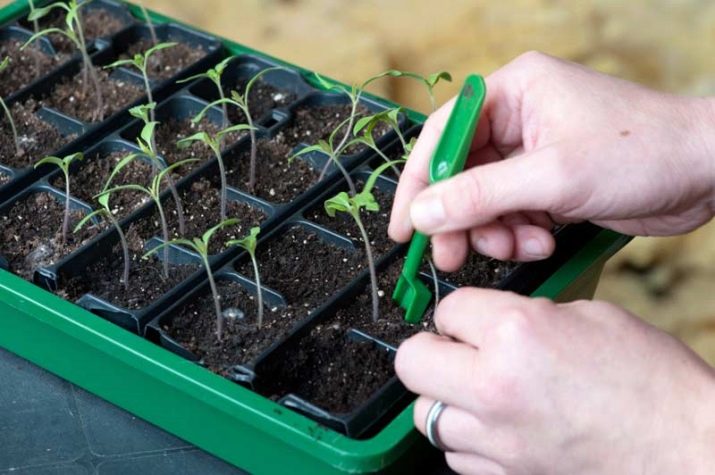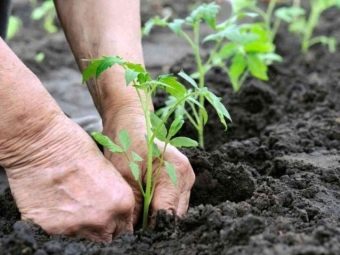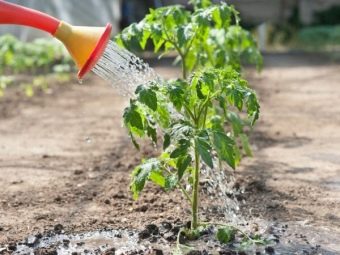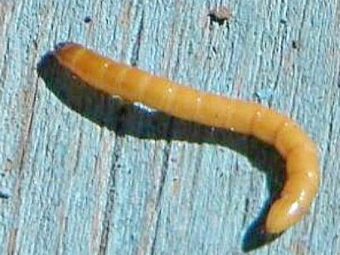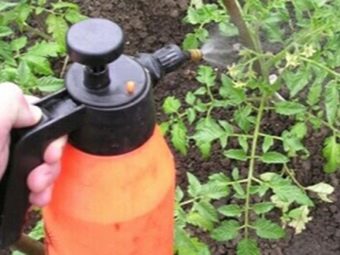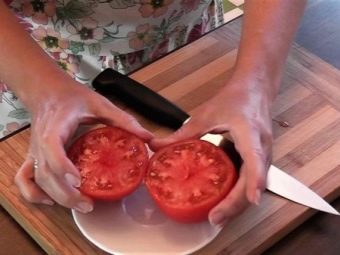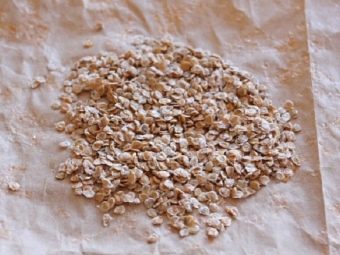Tomato "Monomakh's Cap": description of the variety and cultivation rules
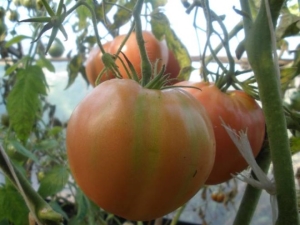
Tomato "Monomakh's Hat" enjoys considerable popularity among gardeners.In their reviews, they note the wonderful taste of the tomato and ease of care for it. In this article, you can find a description of the variety and the rules for its cultivation.
Characteristic variety
Breeders in our country created this type of tomato in 2003. One of the key tasks faced by the experts is to adapt the vegetable to the Russian climate. The resulting variety has several features.
- It ripens perfectly both in greenhouses and in open ground. The only nuance of planting in the open field is that it is imperative to form a bush and make a garter in a timely manner. The formation procedure should be carried out in two stems: in addition to the main one, there is a stepson under the first brush. All other stepchildren must be eliminated. The plant is compact, which allows you to safely plant up to 6 tomatoes per 1 square meter. The leaves are soft, have a dark shade of green, thereby attracting sunlight. The height of the bush ranges from 1 to 1.5 meters.
- It belongs to the medium early varieties. After the first sprouts appear, 90-110 days pass before the day of maturation.
- Large tomatoes. Their weight ranges from 500 to 800 grams, in some cases up to 1 kilogram.
- High yield. Under optimal conditions in open ground it is really possible to get from 6 to 8 kilograms of tomatoes from one bush. Harvest from 1 square meter - 18-20 kilograms. For greenhouses, this figure is slightly lower and varies from 16 to 18 kilograms from 1 square meter.
- Strong immunity. The plant is resistant to diseases such as late blight and virus infections.
- It tolerates rain and hot weather.
Description
The ripe fruit has a low ribbing and is painted in scarlet color. Note such qualities as:
- a large number of cameras (from 6 to 8);
- one tomato contains 6% dry matter;
- sweet taste with a slight pleasant sourness;
- the fruit is round, pinned on the sides;
- thick skin, which makes it possible for a tomato to have a longer presentable appearance and provides a painless transportation;
- As a rule, it is not used for canning because of its bulk size, but it can be cut into slices;
- the fruit is fleshy, with an excellent balance of acids and sugars, therefore it is good for salads, juices and tomato paste;
- eating reduces the risk of cancer;
- not only red, but also brown fruits are suitable for food.
Growing conditions
There are a number of rules, following which you can successfully grow tomatoes of this variety.
- Buy seeds in a specialty store so that there is no risk to stumble upon substandard goods.
- Choose a soil with a low proportion of acids. Self-reducing soil acidity will help fertilize the beds with ashes and dolomite flour.
- Plant a plant only with seedlings.
To do this, a couple of months before planting, seeds are poured with an unsaturated solution of potassium permanganate for half an hour and put on the window. In a wooden box or container they mix earth, rotted manure, peat, wood ash and sand. Seeds are sown in this mixture. The next step is carefully watered and left under the film or glass. Another option is to cover with polycarbonate honeycomb, which stores heat well.
Indoors it is required to establish temperature of + 23-26 degrees, there has to be heat there. When the first sprouts appear, the film is removed, the tomatoes are transferred to a cool room, but the same light one. Leave there for 12-14 hours.
When the seedlings stretch to a height of 100 centimeters, it dives and pinch. And after another 10 days fertilized the first combined feeding.
It is necessary to shorten the branches with a knife in a timely manner, preventing the occurrence of more than three ovaries.
Planting seedlings in the soil and further care
In terms of greenhouses or open ground, it is customary to move seedlings when it is over 40 days old. Before this, the tempering procedure is carried out, periodically exposing the plant to the street. Plant in prepared wells.The distance from one hole to another should be 50 centimeters, and between the rows of holes leave about 60 centimeters.
Watering tomatoes is recommended no more than three times a week, otherwise the fruit may crack. Water must be taken warm and some iodine added to it - about 3-4 drops to a bucket of water. It is better to direct the water stream from the watering can at the root in order to moisten the ground as deeply as possible. During the period of heavy rains no watering is required. At the end of irrigation, it is advised to loosen and mulch the beds, that is, cover the ground with fallen leaves, straw, wood chips, pebbles, small bark, humus or paper, cloth. This method maintains normal air and water balance inside the soil.
Fertilize the soil, usually about three times during the season. Top dressing should include phosphorus and potassium. A good result also gives the use of green manure, that is, green fertilizer. Sideratami can make peas, wheat, sunflower, calendula. These plants can be planted in a separate area, cut the greens and place it on the garden with tomatoes.
In addition, experts recommend introducing earthworms into the ground and covering them with rotten grass.
Pests
It is necessary to focus on such a problem as weeds. In the process of growing bushes need to periodically cut weeds through a flat cutter. The roots are left in the ground, so that they are completely rotted. If there are no weeds, agronomists are advised to plant them, in which case rotten roots will enrich the soil, making it fertile.
Wireworm can also harm tomatoes. So called larvae click beetles. Buried in the ground, they take moisture and injure the root of the plant along the way. There are several options for dealing with these insects.
- Collect by hand.
- Spraying by means of drugs "Basudin", "Diazinon", "Aktara", "Provotoks", "Nemabakt".
- Take a piece of potato, beet or carrot, put it on a stick made of wood and bury it in the soil for 15 centimeters. Part of the wand let it remain stuck out of the ground. When 4 days have passed, the piece is removed together with the beetles, they must be burned.
- Bury a half-liter jar filled with carrots and beets in the neck on the neck. The wire will come for a treat and will not be able to get out of the bank.
- Plant nearby spinach, dahlia or mustard.
- Fill the hole before planting onion husks or mustard powder.
Seed collection for later planting
There are a couple of simple methods.
First of all, you need to get rid of spoiled fruit. The remaining tomatoes are thoroughly rinsed with water and wiped. Then each tomato is divided into two parts, pulp and seeds are extracted with a spoon, which are placed in a half-liter jar. From above, the jar is covered with dense matter and kept for a couple of days in the dark. Now we need to wait until the seeds fall to the bottom. The next stage is washed 3-4 times with clean water.
Further actions are called "dressing." It is necessary to take one tablespoon of soap (72 percent of fatty acids) and rub with a scraper. Pour the resulting mass with water and mix. In this white solution for half an hour put the seeds. Next, the seed is washed and allowed to dry on paper, then placed in a cold place.
The second method is that the pulp obtained from tomato is spread over a blank sheet of paper. On the sheet, put the date and grade, and leave to warm up in the sun. At the end of the procedure folded in a box.
In addition, there are several nuances:
- in no case should not take the seeds of hybrids, in order not to make a mistake in choosing, it is advised to remove the fruits only from the lower brush;
- during years of excellent yield, experienced gardeners make a seed supply for several years ahead;
- no need to lay overripe tomatoes on seeds;
In the presence of seeds of different varieties, increased vigilance should be exercised so as not to confuse the dates and names of varieties on the labels.
Review of tomato varieties "Monomakh", see the following video.

